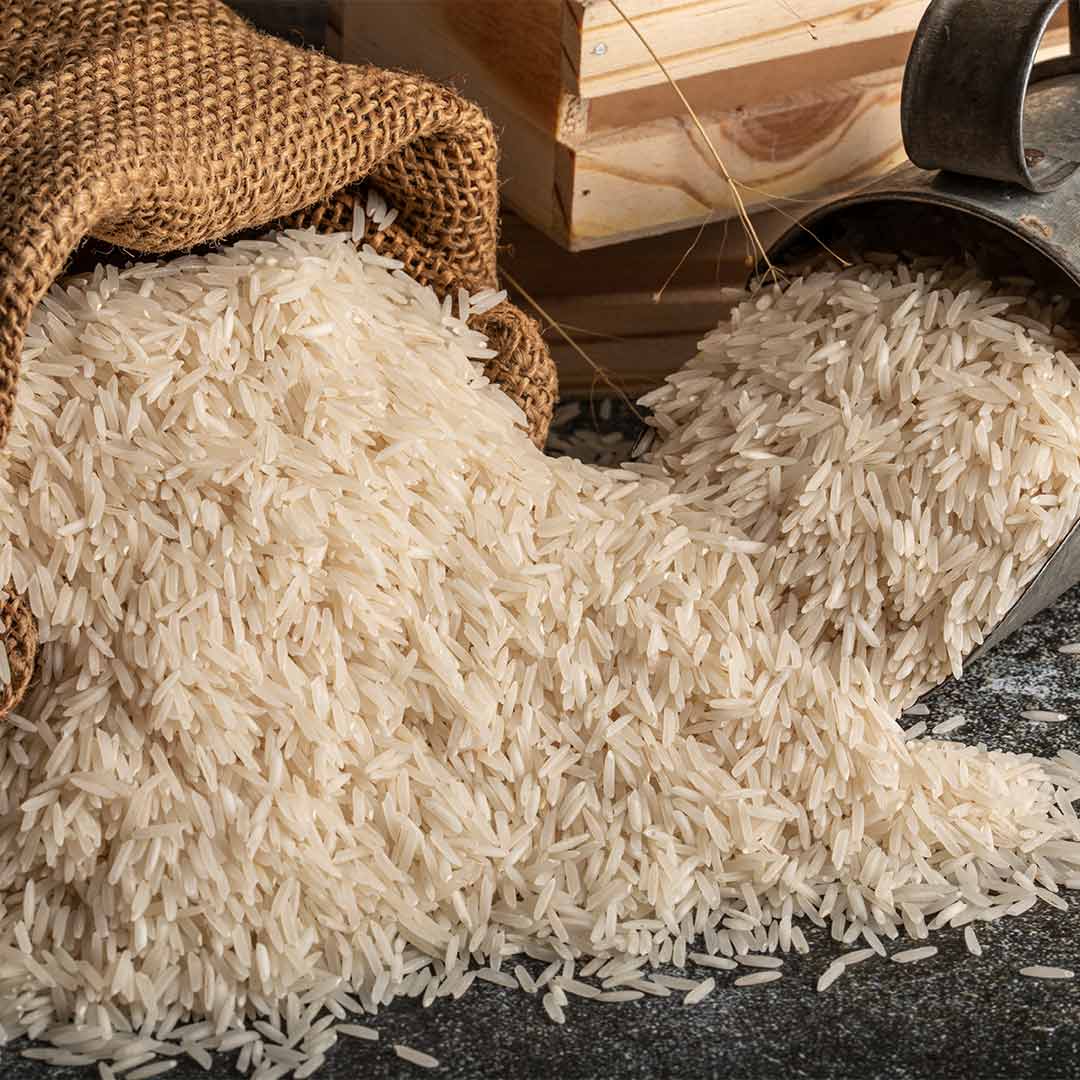Among the myriad varieties of rice that grace tables worldwide, Basmati stands as a crown jewel. Revered for its aroma, slender grains, and distinctive flavor, Basmati rice is not just a staple; it’s a culinary sensation that has captured millions’ hearts and taste buds.
Origin and Legacy
Basmati, a word derived from the Sanskrit language meaning “fragrant,” finds its roots in the foothills of the Himalayas, primarily in the Indian subcontinent. With a history that traces back thousands of years, Basmati rice has been cultivated in the region for generations and is celebrated for its exceptional qualities.
The unique agro-climatic conditions—fertile soil, specific weather patterns, and pure water sources—contribute to the essence of Basmati rice. The long-grain variety, often aged to enhance its fragrance and flavor, distinguishes it from other rice types.

Characteristics and Cultivation
Basmati grains are slender and elongated, and when cooked, they retain their individuality, staying separate rather than clumping together. This characteristic makes it a favorite for dishes like biryanis, pilafs, and other rice-centric delicacies. Its aromatic profile, reminiscent of nutty and floral notes, adds a layer of complexity to any dish it graces.
The cultivation of Basmati rice demands meticulous care and expertise. Farmers follow traditional methods, respecting the natural rhythms of the land. The sowing, nurturing, and harvesting processes are guided by experience and passed down through generations, ensuring the authenticity and quality of the grain.
Culinary Versatility and Global Appeal
Basmati rice isn’t confined to a single cuisine—it transcends borders and cuisines, finding its place in diverse culinary traditions. From the fragrant biryanis of the Indian subcontinent to the aromatic pilafs of the Middle East and the savory rice dishes of Southeast Asia, Basmati rice is a versatile canvas for culinary creativity.
Its ability to complement spices, absorb flavors, and stand out on its own makes it a preferred choice for both home cooks and professional chefs worldwide. Its light, fluffy texture combined with its distinct aroma elevates dishes, turning simple meals into culinary experiences.
Authenticity and Quality Assurance
The authenticity of Basmati rice is paramount. To safeguard its integrity and protect against counterfeit products, various countries have stringent regulations and certifications in place. Geographical Indication (GI) tags, such as India’s GI tag for Basmati rice, ensure that consumers are purchasing the genuine product, acknowledging its origin and unique qualities.
Quality assurance involves multiple parameters, including the length, aroma, cooking characteristics, and absence of impurities. These measures guarantee that consumers receive the premium quality Basmati rice they expect.
Health Benefits and Nutritional Value
Apart from its culinary excellence, Basmati rice also offers nutritional benefits. It is a low-fat and low-cholesterol grain, making it a healthier choice compared to some other rice varieties. With a moderate glycemic index, it helps maintain steady blood sugar levels, making it suitable for individuals managing diabetes when consumed in moderation.
Rich in essential nutrients like carbohydrates, vitamins, and minerals, Basmati rice is an energy source and contributes to a balanced diet.
Sustainability and Future
As agriculture evolves and sustainability becomes increasingly crucial, Basmati rice cultivation faces challenges. Climate change, water scarcity, and changing farming practices pose threats to its traditional cultivation methods. Efforts to adapt cultivation techniques, incorporate sustainable practices, and preserve the authenticity of Basmati rice are imperative for its continued existence and availability for future generations.
Conclusion
Basmati rice isn’t just a grain—it’s a cultural emblem, a culinary delight, and a symbol of tradition and heritage. Its aroma, flavor, and versatility have made it a beloved ingredient in kitchens worldwide. Its journey from the foothills of the Himalayas to global recognition exemplifies not just the excellence of grain but also the interwoven tales of tradition, agriculture, and gastronomy.
In essence, Basmati rice isn’t just a choice; it’s an experience—an aromatic, flavorful journey that tantalizes the senses and brings people together, celebrating the richness of culture and the artistry of food.
As we continue to explore and appreciate diverse culinary treasures, Basmati rice stands tall, reminding us of the beauty found in simplicity, authenticity, and the essence of tradition.
At the heart of it all, Basmati rice isn’t merely sustenance—it’s a masterpiece that connects us through shared meals and cherished memories, inviting us to savor every grain and embrace the rich tapestry of flavors it offers.


We are interested to partner with your organization as soon as possible so that together we can get it done.
Hi, Thank you for your interest, Kindly mail us at info@aeroplanerice.com for any enquiry.